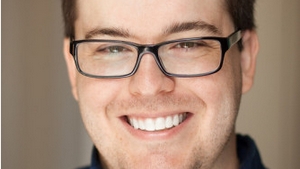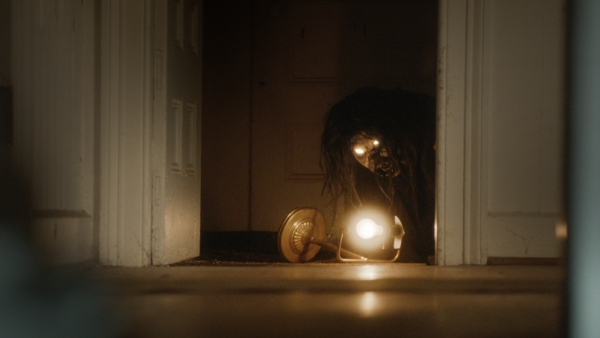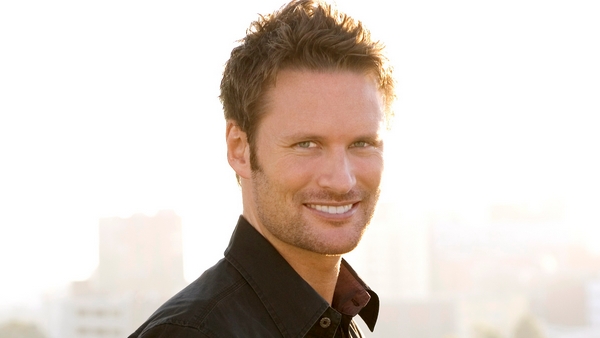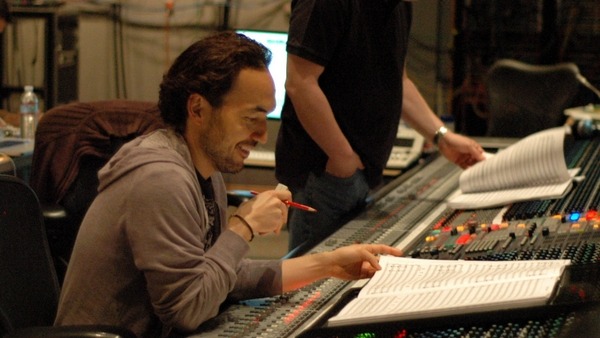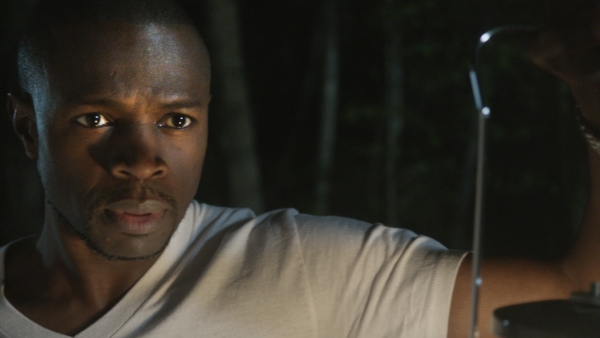 In his latest endeavor emerging film composer Matthew Llewellyn crafts a rich, thematic orchestral score for the Chiller Network original feature film Deep In the Darkness. His sweeping, ominous score evokes classic drama reminiscent of the old school style of horror scores. That combined with Llewellyn’s contemporary yet traditional orchestral textures make him a composer to watch. In the words of director Colin Theys, “Llewellyn found a delicate balance that feels original and intense at the same time, taking the film through some dramatic twists and turns.” Theys continues, “Matthew is delivering world-class scores that elevate the films they help to drive.”
In his latest endeavor emerging film composer Matthew Llewellyn crafts a rich, thematic orchestral score for the Chiller Network original feature film Deep In the Darkness. His sweeping, ominous score evokes classic drama reminiscent of the old school style of horror scores. That combined with Llewellyn’s contemporary yet traditional orchestral textures make him a composer to watch. In the words of director Colin Theys, “Llewellyn found a delicate balance that feels original and intense at the same time, taking the film through some dramatic twists and turns.” Theys continues, “Matthew is delivering world-class scores that elevate the films they help to drive.”
Llewellyn’s musical repertoire is grounded in the traditions of symphonic music for cinema as well as the modern movie making experience. He has been an integral member of composer Brian Tyler‘s team working on high profile projects such as Iron Man 3, Thor: The Dark World, Now You See Me, The Expendables 2, and Final Destination 5. Llewellyn has composed additional music for the critically acclaimed video game FAR CRY 3 and Don Coscarelli’s (Bubba Ho-Tep, Phantasm) film John Dies at the End. He also provided musical arrangements for the hit video games ASSASSIN’S CREED IV: BLACK FLAG, ARMY OF TWO: THE DEVIL’S CARTEL and CALL OF DUTY: MODERN WARFARE 3.
Recently branching out with his own composing career, Deep In the Darkness marks Llewellyn’s third score for films from the Chiller Network, a division of NBC Universal, following his acclaimed work on Dead Souls and Remains. Matthew Llewellyn graduated from the Scoring for Motion Picture and Television program at the University of Southern California as well as receiving a Bachelors of Music degree in Film Scoring at Berklee College of Music. Born in California but raised in Minnesota, Llewellyn has played piano since the age of six and guitar from the age of fourteen. He also plays mandolin, bouzouki, ukulele and bass. We got to chat with Matthew about his work on Deep In the Darkness.
GST: Matthew, how were you approached to score Deep In the Darkness? What made you take the project and what stage was the film in when you committed?
ML: I scored director Colin Theys’ previous two films for the Chiller Network (Dead Souls, Remains). I have a long working relationship with producer Andrew Gernhard and Synthetic Cinema International; whenever they have a project in production they usually give me a call. Oddly enough, even though we’ve been working together for years, Andrew and I have never met in person so when we do drinks will be in order!
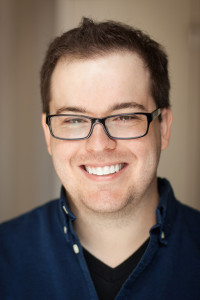 GST: Last time we had been in contact you were working for Brian Tyler – you actually emailed me some music for use in my interview with Brian last year so thanks again for that! Does this film, along with Dead Souls and Remains now mean you’re taking smaller projects under his roof, or have you completely struck out on your own?
GST: Last time we had been in contact you were working for Brian Tyler – you actually emailed me some music for use in my interview with Brian last year so thanks again for that! Does this film, along with Dead Souls and Remains now mean you’re taking smaller projects under his roof, or have you completely struck out on your own?
ML: You are very welcome! I have in fact ventured out on my own but Brian and I continue to work together. I have always had a blast working on his projects; it gets a little crazy sometimes but it’s always quite the experience.
GST: What’s the turn around time for a project like this? It’s a TV movie but it’s still 90 minutes in which to figure out where to place music. So aside from the runtime on the soundtrack how much music did you end up writing?
ML: Luckily I had a good chunk of time to work on the score, about two months in total. I wrote seventy minutes of original music for the film, fifty of which was recorded with an orchestra. The remaining twenty was produced here at my studio. It was an insane amount of work but it was a great feeling when I made it to the finish line.
GST: It’s a pretty effective story and thriller even without music but your efforts really help heighten the scenes. Can you talk a little bit about the spotting sessions and what ideas the directors had when they came to you?
ML: Before I write a single note Colin and I talk at length about conceptual ideas for the score. Typically, the first thing we discuss is what characters and/or places will have their own unique themes. For “Deep in the Darkness” we settled
on four themes and one motif:
Michael’s Theme – “Ashborough Assimilation” and “Back into the Light”
Michael’s Contemplative Theme (Secondary) – “A Good Fit”
Lady Zellis’ Theme – “Don’t Trust Lady Zellis”
Ashborough Theme – “Welcome to Ashborough”
Isolates’ Motif – “Infiltrating the House”Quite a bit of the score is in 12/8 which gave it a nice light, almost fairytale-sounding flavor. That combined with dark harmonies and dense orchestration proved to be a perfect palette for the film. Colin knew he didn’t want any tribal-sounding music for the Isolates so after trying a few different melodic ideas we decided that motif was a more effective solution. After experimenting with various clusters I found one that I felt had the right flavor. This pulsing cluster, which was written for the violas, returns throughout the film whenever the Isolates are present.
GST: There are some great tracks on this score. It has an old-school feel with some very modern sensibilities. Some of the music have a young John Williams feel and I picked up on some bits that sounded a little like Michael Giacchino. Did you have a style you were aiming for personally or do you look to other composers for inspiration?
ML: John Williams’ music will always be an infinite world of inspiration for me. My main focus when composing is to develop my own sound and fine-tune my craft. I never set out to sound like Williams or Giacchino but I do like to ponder what they might do for a particular scene.
GST: Your score gives horror a kind of elegance which is refreshing not to mention being easy on the ears. But there are times that unavoidably call on horror music standbys like the screeching of violins, heavy brass and drums. What kind of elements do you see as being necessary in every horror film? What was your selection process for this project and did you get to experiment much?
ML: If it’s a traditional orchestral horror score I think more often than not you will need to do some aleatoric writing. This style of composing works great for jump scares and more sound effect-type underscore. In “Deep in the Darkness” I wrote a lot of string tremolo glissandi (“Deep in the Darkness” and “We’re Not Going Back”). A lot of experimentation goes into these types of cues. Sometimes certain orchestral gestures don’t sound that great and you’re forced to make adjustments during the session.
The most common note to the orchestra from me during the session was to “be more aggressive”. I really wanted that biting/angry tone for the more horror-sounding cues. This is especially evident in “Rise of the Isolates”, “The Swarm”, and “They’re Coming for You”.
GST: On that note, what kind of learning curve did you have on Deep In the Darkness and did it take a while to find the sound you and the director were happy with?
ML: I always spend a great deal of time working on themes. It’s very important to me that themes are memorable and unique so that when they return throughout the film a first-time audience member can latch onto them without even realizing it. Having strong themes really adds an extra cohesive storytelling layer. Once we nailed down the thematic material the rest of the score kind of fell into place. The most important thing, as always, is to get the tone of the film right. Our goal was to have a moody yet thematic-sounding score.
GST: The stand out tracks, for me, are “Welcome to Ashborough”, “Don’t Trust Lady Zellis”, and “They’re Coming For You” – they’re really dynamic and very sophisticated. What are your favorite tracks and what are you most proud of?
ML: The funny thing is I was never really happy with “They’re Coming For You” during
the mockup stage. The orchestral sample libraries I was using never quite got the angry, biting sound that I was hearing in my head. Unfortunately, as good as sample libraries have gotten over the last ten years, they still can’t capture the magic of a real orchestra.
After the first take of that cue with the grandiose horn-trilled ending I just smiled because it was exactly what I was looking for. I think I’m most proud of “Back into the Light” and “Crawling for Jessica”, both for very different reasons. Thematic orchestral scores are a rare thing these days and I am excited to have some very traditional-sounding cues in the film. That’s one of the great things about working with director Colin Theys, he really trusts me to take musical chances.
GST: What’s next for you now that this is completed? More TV work or are you heading back to the big screen?
ML: I’m currently working for Brian Tyler on The Expendables 3. I also have a couple of other projects in the pipeline but they are hush-hush at the moment.
GST: Can’t wait to hear it. Thanks for your time Matthew.
ML: Thank you. I look forward to chatting again soon!
Thanks to Matthew for his time. Deep In the Darkness premieres on the Chiller network on Friday, May 23rd. Click the following link to preview music samples from the Deep In the Darkness score and be sure to visit Matthew’s website at www.matthewllewellyn.com.
Dr. Michael Cayle thought leaving the chaotic lifestyle of New York City behind for the quiet, small town of Ashborough would bring his family closer together. Soon after arriving, however, he discovers the town’s deepest secret: a terrifying — and controlling — race of creatures that live amongst the darkness in the woods behind his home.
Based on the best-selling novel by Michael Laimo, Deep in the Darkness stars Sean Patrick Thomas and Dean Stockwell and is produced by Andrew Gernhard and Zach O’Brien for Synthetic Cinema International (Remains, Dead Souls). The film is written by John Doolan and directed by Colin Theys.
